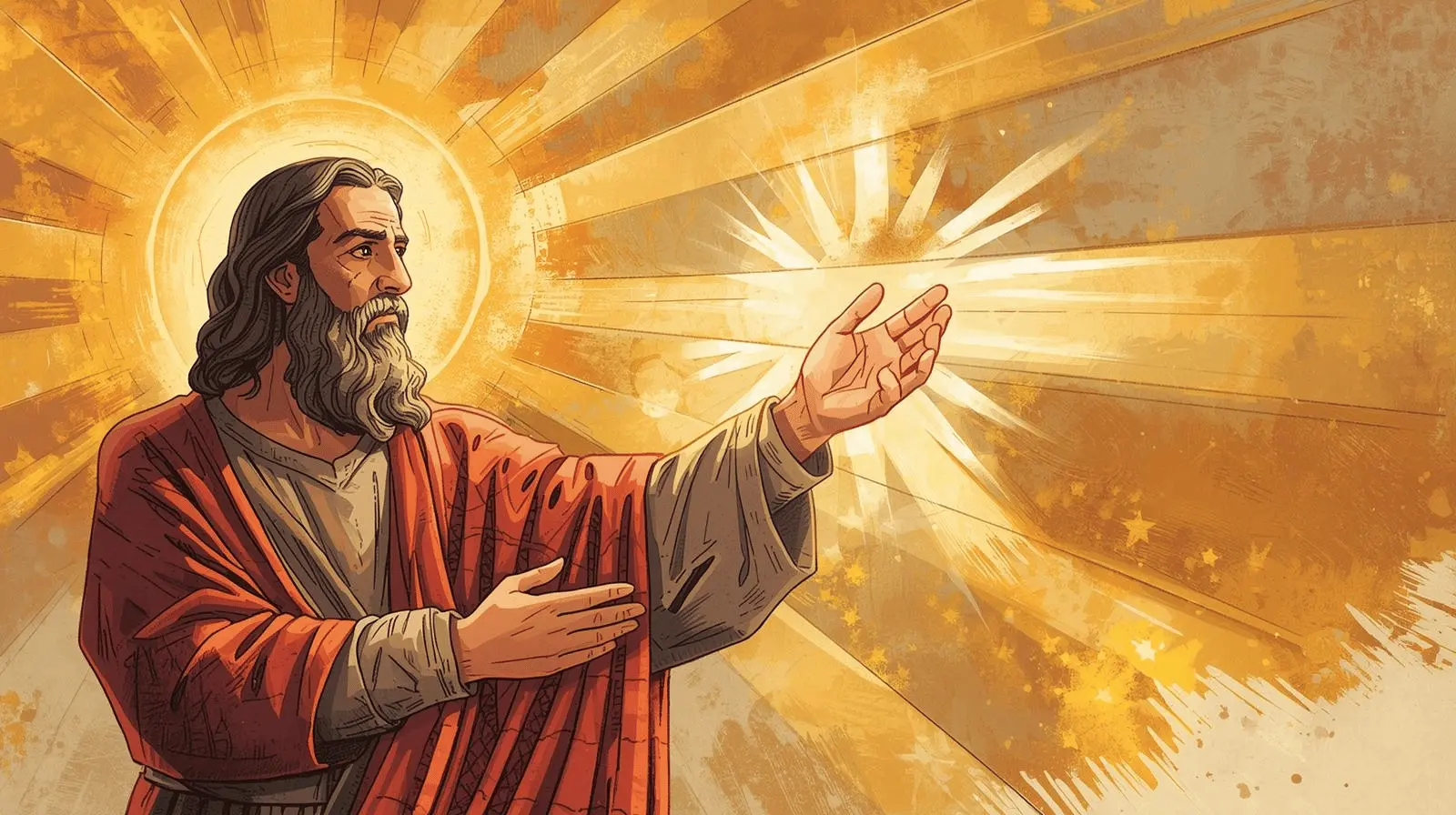Blindness in antiquity was more than a medical condition. It carried layers of social, cultural, and spiritual meaning that shaped how people treated those who could not see.
The Gospel of John chapter 9 tells the story of a man born blind who encounters Jesus. His healing is not only a miracle of restored vision but also a powerful statement about faith, spiritual sight, and human dignity.
Blindness as a Common Condition
Blindness was widespread in antiquity. Harsh environments, unclean water, dust-filled winds, and untreated infections meant many people suffered from eye diseases.
Without effective treatments, blindness was permanent. Few could live independently. Many turned to begging, relying on public charity or family support. This made blindness not just a physical struggle but also an economic and social one.
Survival Through Dependence
Blind individuals often positioned themselves in busy areas—temple gates, market streets, or city entrances—hoping for alms. Their survival depended on the generosity of others.
Blindness and Religious Exclusion
Religious law and cultural practice often reinforced the stigma surrounding blindness.
Restrictions in Jewish Law
The Hebrew Bible placed restrictions on those with physical impairments. Priests with blindness or other disabilities could not serve at the altar. Sacrificial animals with defects—including blindness—were not acceptable offerings.
Social Perception of Impurity
For ordinary people, blindness carried an aura of incompleteness. Those who could not see were sometimes thought to embody imperfection or even divine judgment. This perception kept them socially and religiously marginalized.
Symbolic Meaning of Blindness

Blindness was also used as a metaphor in ancient texts. Writers and teachers employed it to represent deeper realities.
Blindness as a Sign of Sin
In many traditions, blindness was understood as punishment. The disciples’ question in John 9—“Who sinned, this man or his parents, that he was born blind?”—reflects this mindset. The assumption was clear: blindness did not happen by chance but as a direct result of wrongdoing.
Blindness and Spiritual Ignorance
Blindness also symbolized ignorance. Those who did not understand divine truth were described as “blind.” Prophets accused unfaithful leaders of being “blind guides.” In this sense, blindness became shorthand for spiritual failure.
Blindness and Paradoxical Wisdom
Yet blindness did not always carry negative meaning. In certain cultural traditions, the blind were seen as possessing deeper insight.
Greek Traditions of Blind Seers
In Greek mythology, Tiresias stands out as a blind prophet who could see truths hidden from others. His blindness, paradoxically, sharpened his spiritual vision. This theme echoes in other ancient stories, where blindness is linked with wisdom or prophecy.
Echoes in the Gospel
The paradox is powerful in John 9. The man who begins the story blind ends with spiritual clarity. Meanwhile, the religious leaders, who think they see clearly, are exposed as spiritually blind.
Medical Understanding of Blindness
Medicine in the ancient world offered little relief. Physicians described eye conditions, but treatments were limited, and congenital blindness remained incurable.
Treatments and Remedies
Medical texts describe ointments, herbs, and surgical attempts. But many people turned to folk remedies. One common belief was that saliva—especially saliva from the morning before eating—had healing power.
Jesus’ Use of Saliva and Clay
When Jesus makes clay with his saliva and places it on the blind man’s eyes, he engages with a familiar cultural practice. His healing is not a folk cure but a miraculous restoration of sight to a man born blind—a condition medicine could not touch.
Blindness in the Hebrew Scriptures

Blindness appears often in the Hebrew Bible, carrying both negative and hopeful meanings.
Blindness as Judgment
Prophets sometimes used blindness as an image of spiritual failure. Leaders who ignored God’s commands were described as blind, unable to guide the people faithfully.
The Hope of Restored Sight
Yet prophets also envisioned a future when God would open blind eyes. Isaiah spoke of a day when the Messiah would bring sight to the blind. This expectation gave blindness a dual meaning: a sign of human failure, but also a place where God’s renewal would appear.
The Story of John 9 in Context
The healing of the man born blind is one of the longest miracle narratives in the New Testament. John devotes an entire chapter to it, highlighting its importance.
A Man Born Blind
Unlike others who lost sight later in life, this man had never seen. His condition symbolized hopelessness. No doctor or remedy could change his situation. When Jesus heals him, the act is extraordinary.
A Growing Testimony
The story is told in stages. At first, the man simply receives his sight. As the chapter progresses, he develops a growing awareness of who Jesus is. By the end, he confesses faith in Jesus as the Son of Man.
Related Posts
- Did Jesus Really Heal the Blind Man? Investigating John 9 as History
- Why Israel Is the Key to End-Time Prophecies
- The Secret Meaning of 144,000 in Revelation Explained
- The Seven Deadly Sins: Their Meaning, Impact, and Modern Relevance
Conflict with Religious Leaders
The healing sparks controversy. Instead of celebrating the miracle, the Pharisees question it.
Sabbath Controversy
Jesus made clay on the Sabbath, which some considered a violation of Sabbath law. This technical detail becomes the basis for criticism. The leaders focus on rules, while missing the miracle before them.
Spiritual Blindness Exposed
The leaders repeatedly interrogate the healed man and even summon his parents. Yet the man responds with growing boldness. In the end, his testimony exposes their spiritual blindness. They claim to see, yet fail to recognize God’s work.
Blindness and The Early Christian Community
The story also reflects the struggles of John’s community. Early Christians often faced rejection from synagogues.
Expulsion and Identity
The man is cast out after confessing faith in Jesus. This mirrors the experience of believers who were excluded for their confession of Christ. The story reassures the community: being rejected by authorities is not failure but part of following Jesus.
Healing as Allegory
For the early church, the blind man’s story became an allegory of discipleship. To see Jesus was to join his community, even if it meant separation from former religious structures.
Lessons from the Ancient Context
When read against its cultural background, John 9 takes on even deeper meaning.
Overturning Cultural Assumptions
Blindness once symbolized sin, impurity, and weakness. Jesus overturns these assumptions by declaring that the man’s blindness is not due to sin but is a place where God’s glory will be revealed.
True Sight as Faith
The story redefines sight. Physical vision is restored, but the greater miracle is the man’s recognition of Jesus. Seeing becomes a metaphor for faith, while blindness becomes a symbol for unbelief.
Broader Implications
John 9 speaks beyond its time, raising questions that remain relevant today.
Human Dignity
By healing the blind man, Jesus restores not only his sight but also his dignity. He is no longer defined by dependence or stigma but becomes a witness to divine truth.
Vision and Responsibility
The story challenges those who claim to see. Knowledge without faith can become blindness. True vision is not only physical but moral and spiritual.
For modern understanding of visual impairment, the World Health Organization provides valuable insight into global progress and continuing challenges (WHO).

